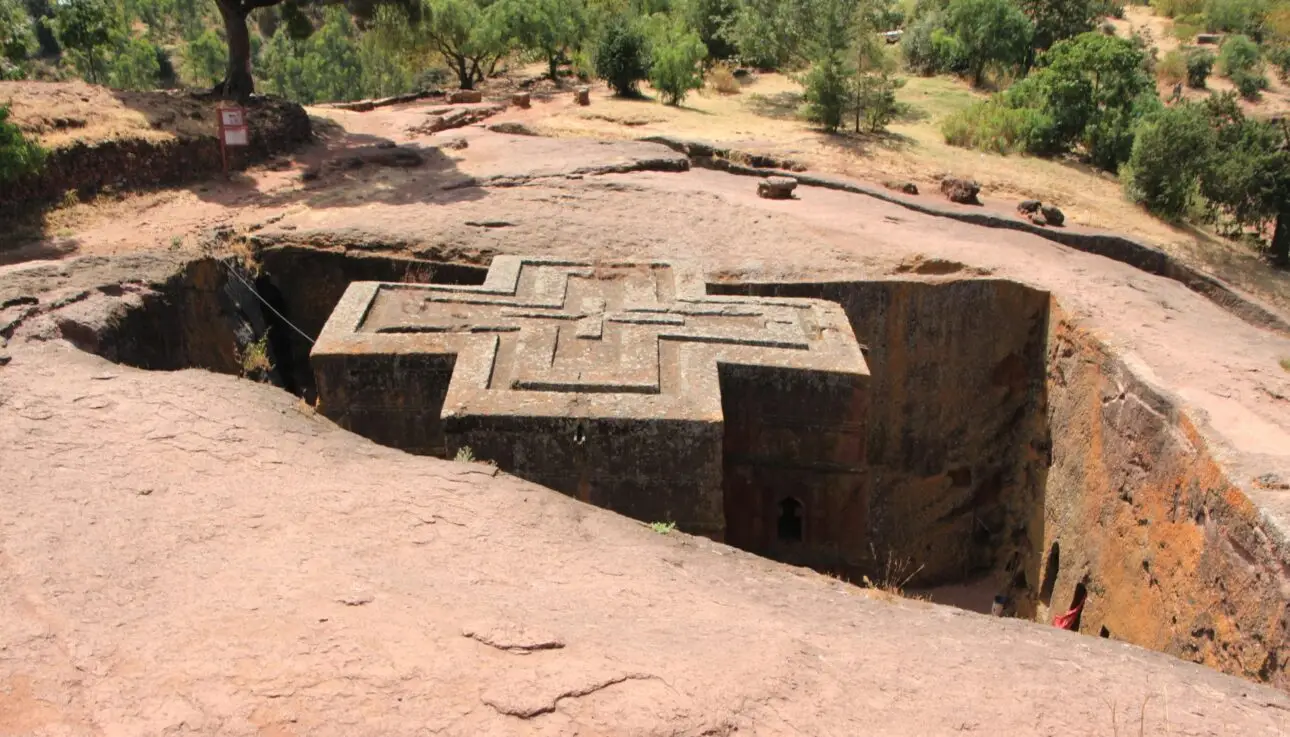Exploring the Wonders of Lalibela: A Journey Through Time and Faith
The historic town of Lalibela is nestled in the misty highlands of northern Ethiopia. It is atestament to the enduring legacy of Ethiopian Orthodox Christianity. This remarkable destination is best known for its breathtaking collection of rock-cut churches, which date back to the 12th century.
In 1978, UNESCO placed these extraordinary structures on the UNESCO World Heritage Site list. Today, they continue to serve as active places of worship and pilgrimage. Recognized as one of Ethiopia’s holiest destinations, Lalibela’s churches attract countless visitors and pilgrims each year. All eager to immerse themselves in the rich tapestry of history and spirituality.
A Glimpse into 800 Years of History
Ethiopia boasts a rich Christian heritage. It was one of the first countries to embrace Christianity after the 4th C conversion of the Aksumite emperor Ezana. For centuries, the city of Aksum was the epicenter of Ethiopia’s religious and political life. And it is rumored to be the resting place of one of the Three Wise Men and the keeper of the Ark of the Covenant. However, as the Aksumite Empire began to decline, Lalibela’s significance grew. This culminated in its designation as the country’s capital in the late 12th century.
In 1187, after the capture of Jerusalem by the Muslim sultan Saladin, Ethiopian Orthodox Christians faced barriers to pilgrimage to the Holy Land. In response, King Lalibela commissioned the creation of rock-hewn churches, crafting a ‘New Jerusalem’ as a sanctuary for his people. The layout and names of these churches symbolically reflect the sacred sites of Jerusalem. A place where Lalibela himself spent part of his childhood.
Architectural Marvels of Lalibela
What makes the churches of Lalibela truly extraordinary is their unique construction. Each church is hewn from a single piece of living rock, standing not above ground level but in sunken pits, with their roofs flush with the surrounding landscape. The builders painstakingly chiseled the intricate details by hand —doors, windows, columns. There is also an extensive network of drainage ditches and connecting trenches. Recognized by UNESCO, there are 11 churches grouped into two distinct sections on either side of the River Jordan:
The Northern Group:
- Biete Medhani Alem (House of the Savior of the World)
- Biete Mariam (House of Mary)
- Biete Maskal (House of the Cross)
- Biete Denagel (House of the Virgins)
- Biete Golgotha Mikael (House of Golgotha Mikael)
The Southern Group:
- Biete Amanuel (House of Emmanuel)
- Biete Qeddus Mercoreus (House of St. Mercurius)
- Biete Abba Libanos (House of Abbot Libanos)
- Biete Gabriel Raphael (House of Gabriel Raphael)
- Biete Lehem (House of Holy Bread)
The 11th church, Biete Ghiorgis (House of St. George), is set apart yet connected via a series of trenches, showcasing Lalibela’s architectural ingenuity.
Notable Churches to Explore
While all of Lalibela’s churches offer unique insights into Ethiopia’s religious heritage, a few stand out for their historical and cultural significance:
- Biete Medhani Alem: Known as the largest monolithic church in the world, Biete Medhani Alem features five aisles and is home to the Lalibela Cross, believed to have been carved by King Lalibela himself.
- Biete Ghiorgis: Celebrated as the finest and best-preserved church, its distinct Greek cross shape and 16th-century paintings of St. George slaying the dragon make it a must-visit.
- Biete Mariam: The most sacred church for pilgrims due to its dedication to the Virgin Mary, Biete Mariam is adorned with stunning frescoes and intricately carved details.
- Biete Golgotha Mikael: While this church is restricted to female visitors, men can admire its life-sized bas-relief sculptures of the 12 apostles and the revered Selassie Chapel, believed to house King Lalibela’s tomb.
These churches are not just historical sites; they are living sanctuaries where daily worship and numerous religious festivals take place. One of the most captivating events is Genna, the Ethiopian Orthodox Christmas celebration on January 7. Tens of thousands of pilgrims gather to participate in candlelit vigils and witness the beautiful woreb, a musical representation of Christ’s birth.
Visiting Lalibela: Practical Information
You can choose to visit Lalibela independently or as part of an organized tour. Joining a guided tour offers numerous advantages, such as expert insight into the complex’s history and legends, as well as transportation arrangements. Options range from full-day explorations of the churches and surrounding villages to extended itineraries including visits to other northern attractions like Lake Tana, the Blue Nile Falls, Gondar, and Aksum.
For those who prefer self-guided adventures, reaching Lalibela is straightforward. While buses can be long and uncomfortable—taking about two full days from the capital, Addis Ababa—flying into Lalibela Airport (LLI) is the most efficient option, with direct flights from major Ethiopian cities and connecting flights available from various locations across Africa.
Important Details to Keep in Mind
Admission to Lalibela costs $50 for adults and $25 for children aged 9 to 13, granting access to the entire complex (with some exceptions). As these churches hold deep significance for many Ethiopians, visitors should remove their shoes and hats when asked and maintain respect for the sacred atmosphere. The churches welcome guests daily from 8 a.m. to noon and again from 2 p.m. to 5:30 p.m. However, the site is not wheelchair-accessible.
While the churches are captivating year-round, the dry season from October to March is typically the most pleasant time to visit.
Conclusion
A journey to Lalibela is more than a trip; it’s an immersion into a world where faith, history, and community converge. The awe-inspiring rock-cut churches stand as a powerful reminder of Ethiopia’s rich Christian heritage, inviting visitors to explore the depths of a culture that has thrived for centuries. Whether you’re drawn by the architectural wonders, the spiritual ambiance, or the chance to witness a vibrant living tradition, Lalibela offers a truly unique experience that lingers long after your visit.



